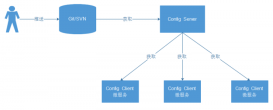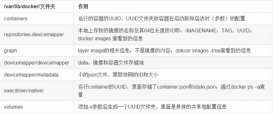一、背景
之前项目中用到了Apollo配置中心,对接Apollo配置中心后,配置中心的属性就可以在程序中使用了,那么这个是怎么实现的呢?配置中心的属性又是何时加载到程序中的呢?那么我们如果找到了这个是怎么实现的是否就可以 从任何地方加载配置属性、配置属性的加解密功能呢?
二、需求
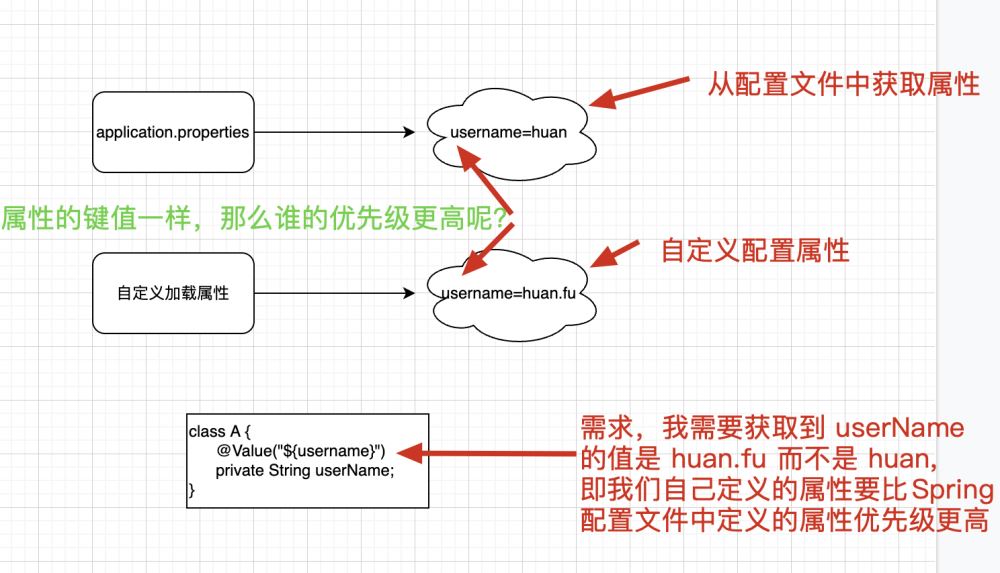
从上图中得知,我们的需求很简单,即我们自己定义的属性需要比配置文件中的优先级更高。
三、分析
1、什么时候向SpringBoot中加入我们自己的配置属性
当我们想在Bean中使用配置属性时,那么我们的配置属性必须在Bean实例化之前就放入到Spring到Environment中。即我们的接口需要在 application context refreshed 之前进行调用,而 EnvironmentPostProcessor 正好可以实现这个功能。
2、获取配置属性的优先级
我们知道在 Spring中获取属性是有优先级的。
比如我们存在如下配置属性 username
├─application.properties │ >> username=huan ├─application-dev.properties │ >> username=huan.fu
那么此时 username 的值是什么呢?此处借用 Apollo的一张图来说解释一下这个问题。
参考链接:https://www.apolloconfig.com/#/zh/design/apollo-design
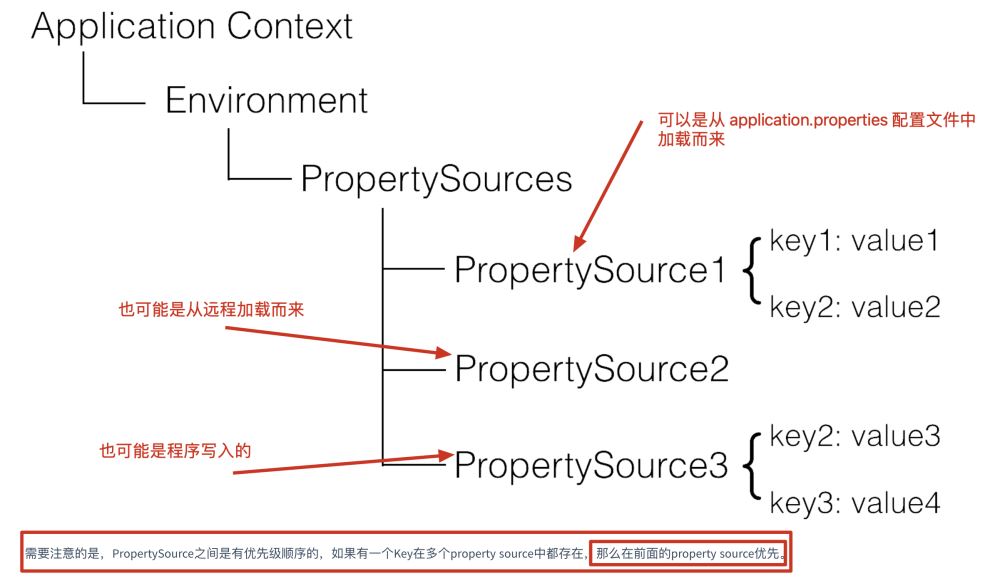
Spring从3.1版本开始增加了ConfigurableEnvironment和PropertySource:
ConfigurableEnvironment
- Spring的ApplicationContext会包含一个Environment(实现ConfigurableEnvironment接口)
- ConfigurableEnvironment自身包含了很多个PropertySource
PropertySource
- 属性源
- 可以理解为很多个Key - Value的属性配置
由上方的原理图可知,key在最开始出现的PropertySource中的优先级更高,上面的例子在SpringBoot中username的值为huan.fu。
3、何时加入我们自己的配置
由第二步 获取配置属性的优先级 可知,PropertySource 越靠前越先执行,那么要我们配置生效,就必须放在越前面越好。
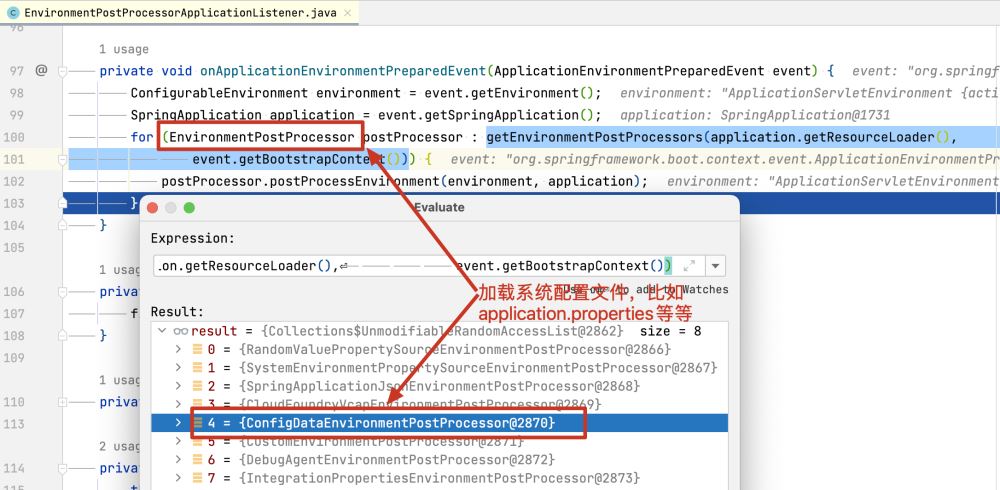
由上图可知,SpringBoot加载各种配置是通过EnvironmentPostProcessor来实现的,而具体的实现是ConfigDataEnvironmentPostProcessor来实现的。那么我们自己编写一个EnvironmentPostProcessor的实现类,然后在ConfigDataEnvironmentPostProcessor后执行,并加入到 Environment中的第一位即可。
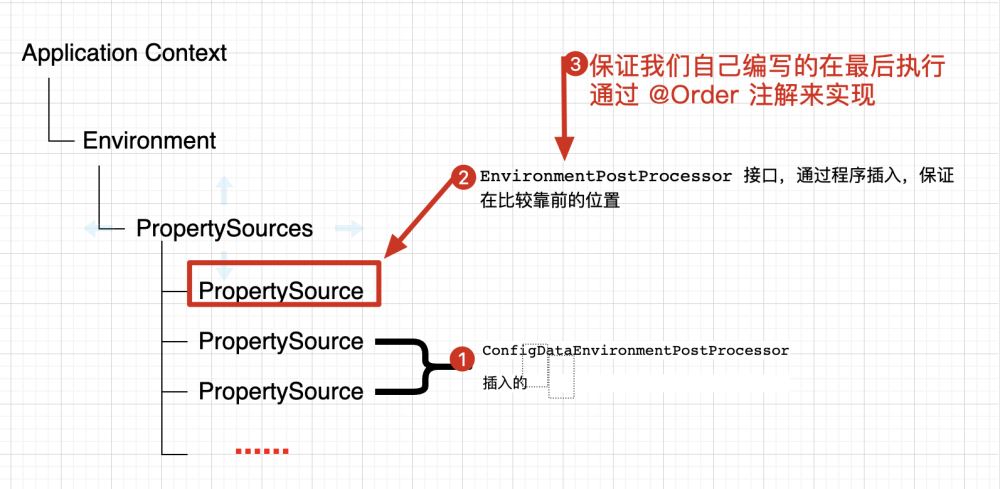
四、实现
1、引入SpringBoot依赖
<?xml version="1.0" encoding="UTF-8"?>
<project xmlns="http://maven.apache.org/POM/4.0.0" xmlns:xsi="http://www.w3.org/2001/XMLSchema-instance"
xsi:schemaLocation="http://maven.apache.org/POM/4.0.0 https://maven.apache.org/xsd/maven-4.0.0.xsd">
<modelVersion>4.0.0</modelVersion>
<parent>
<groupId>org.springframework.boot</groupId>
<artifactId>spring-boot-starter-parent</artifactId>
<version>2.6.6</version>
<relativePath/> <!-- lookup parent from repository -->
</parent>
<groupId>com.huan.springcloud</groupId>
<artifactId>springboot-extension-point</artifactId>
<version>0.0.1-SNAPSHOT</version>
<name>springboot-extension-point</name>
<properties>
<java.version>1.8</java.version>
</properties>
<dependencies>
<dependency>
<groupId>org.springframework.boot</groupId>
<artifactId>spring-boot-starter-web</artifactId>
</dependency>
</dependencies>
</project>
2、在application.properties中配置属性
vim application.properties
username=huan
3、编写自定义属性并加入Spring Environment中
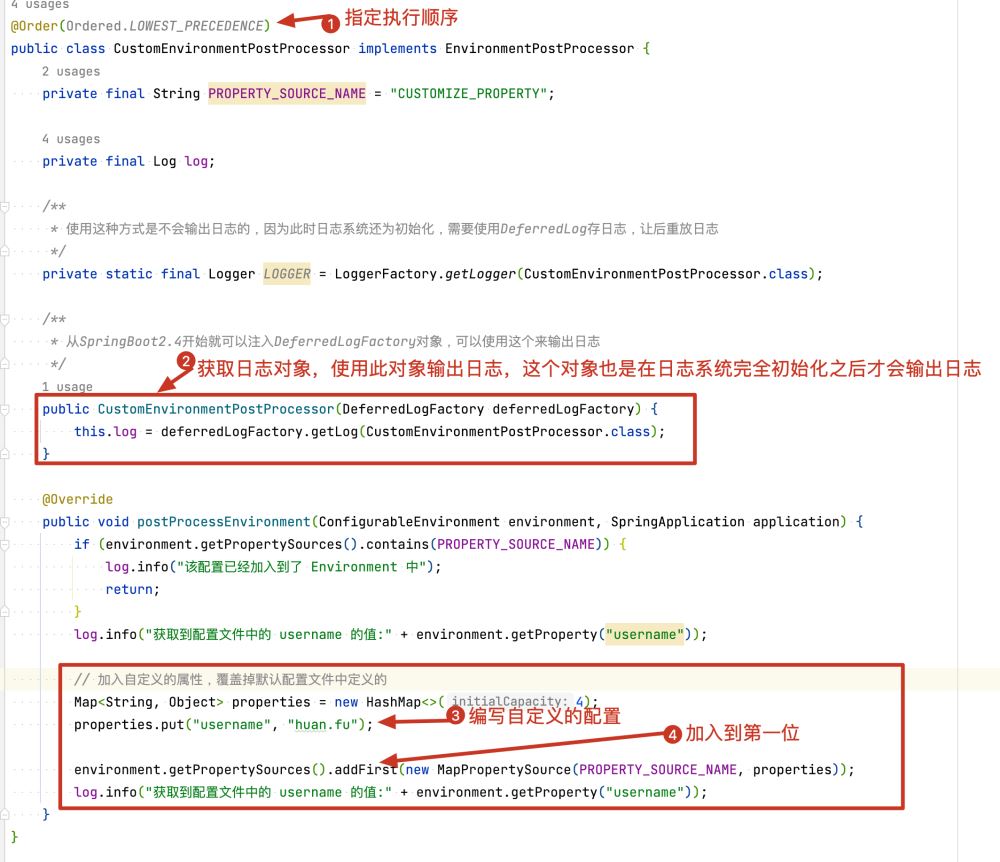
注意:
1、如果发现程序中日志没有输出,检查是否使用了slf4j输出日志,此时因为日志系统未初始化无法输出日志。解决方法如下:
SpringBoot版本
>= 2.4 可以参考上图中的使用 DeferredLogFactory 来输出日志
< 2.4
1、参考如下链接 https://stackoverflow.com/questions/42839798/how-to-log-errors-in-a-environmentpostprocessor-execution
2、核心代码:
@Component
public class MyEnvironmentPostProcessor implements
EnvironmentPostProcessor, ApplicationListener<ApplicationEvent> {
private static final DeferredLog log = new DeferredLog();
@Override
public void postProcessEnvironment(
ConfigurableEnvironment env, SpringApplication app) {
log.error("This should be printed");
}
@Override
public void onApplicationEvent(ApplicationEvent event) {
log.replayTo(MyEnvironmentPostProcessor.class);
}
}
4、通过SPI使自定义的配置生效
1、在 src/main/resources下新建META-INF/spring.factories文件
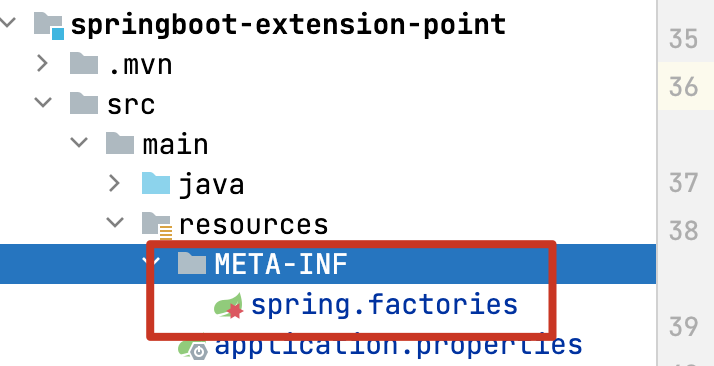
2、配置
org.springframework.boot.env.EnvironmentPostProcessor=\ com.huan.springcloud.extensionpoint.environmentpostprocessor.CustomEnvironmentPostProcessor
5、编写测试类,输出定义的 username 属性的值
@Component
public class PrintCustomizeEnvironmentProperty implements ApplicationRunner {
private static final Logger log = LoggerFactory.getLogger(PrintCustomizeEnvironmentProperty.class);
@Value("${username}")
private String userName;
@Override
public void run(ApplicationArguments args) {
log.info("获取到的 username 的属性值为: {}", userName);
}
}
6、运行结果
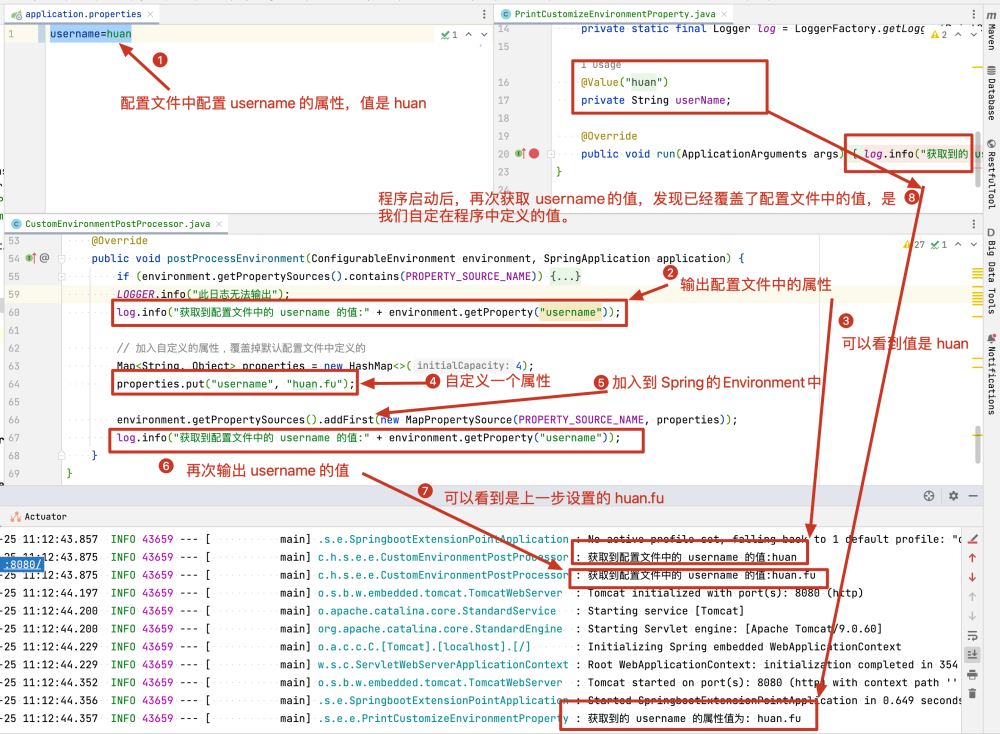
五、注意事项
1、日志无法输出
参考上方的 3、编写自定义属性并加入Spring Environment中提供的解决方案。
2、配置没有生效检查
- 检查EnvironmentPostProcessor的优先级,看看是否@Order或者Ordered返回的优先级值不对。
- 看看别的地方是否实现了 EnvironmentPostProcessor或ApplicationContextInitializer或BeanFactoryPostProcessor或BeanDefinitionRegistryPostProcessor等这些接口,在这个里面修改了 PropertySource的顺序。
- 理解 Spring 获取获取属性的顺序 参考 2、获取配置属性的优先级
3、日志系统如何初始化
如下代码初始化日志系统
org.springframework.boot.context.logging.LoggingApplicationListener
六、完整代码
https://gitee.com/huan1993/spring-cloud-parent/tree/master/springboot/springboot-extension-point/src/main/java/com/huan/springcloud/extensionpoint/environmentpostprocessor
七、参考链接
1、https://github.com/apolloconfig/apollo/blob/master/apollo-client/src/main/java/com/ctrip/framework/apollo/spring/boot/ApolloApplicationContextInitializer.java
2、https://github.com/apolloconfig/apollo/blob/master/apollo-client/src/main/java/com/ctrip/framework/apollo/spring/config/PropertySourcesProcessor.java
3、https://www.apolloconfig.com/#/zh/design/apollo-design
4、解决EnvironmentPostProcessor中无法输出日志
5、https://docs.spring.io/spring-boot/docs/2.6.6/reference/htmlsingle/#howto.application.customize-the-environment-or-application-context
到此这篇关于SpringBoot扩展点EnvironmentPostProcessor的文章就介绍到这了,更多相关SpringBoot扩展点EnvironmentPostProcessor内容请搜索服务器之家以前的文章或继续浏览下面的相关文章希望大家以后多多支持服务器之家!
原文链接:https://www.cnblogs.com/huan1993/p/16189864.html



